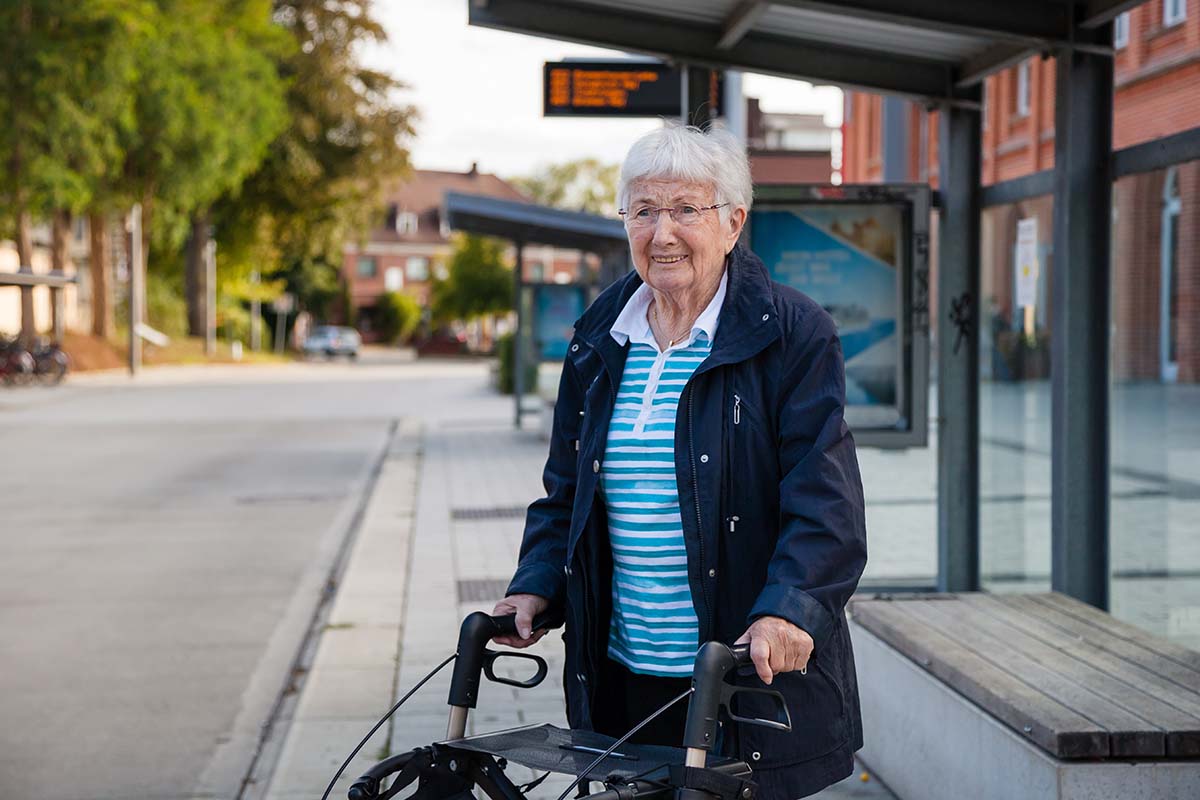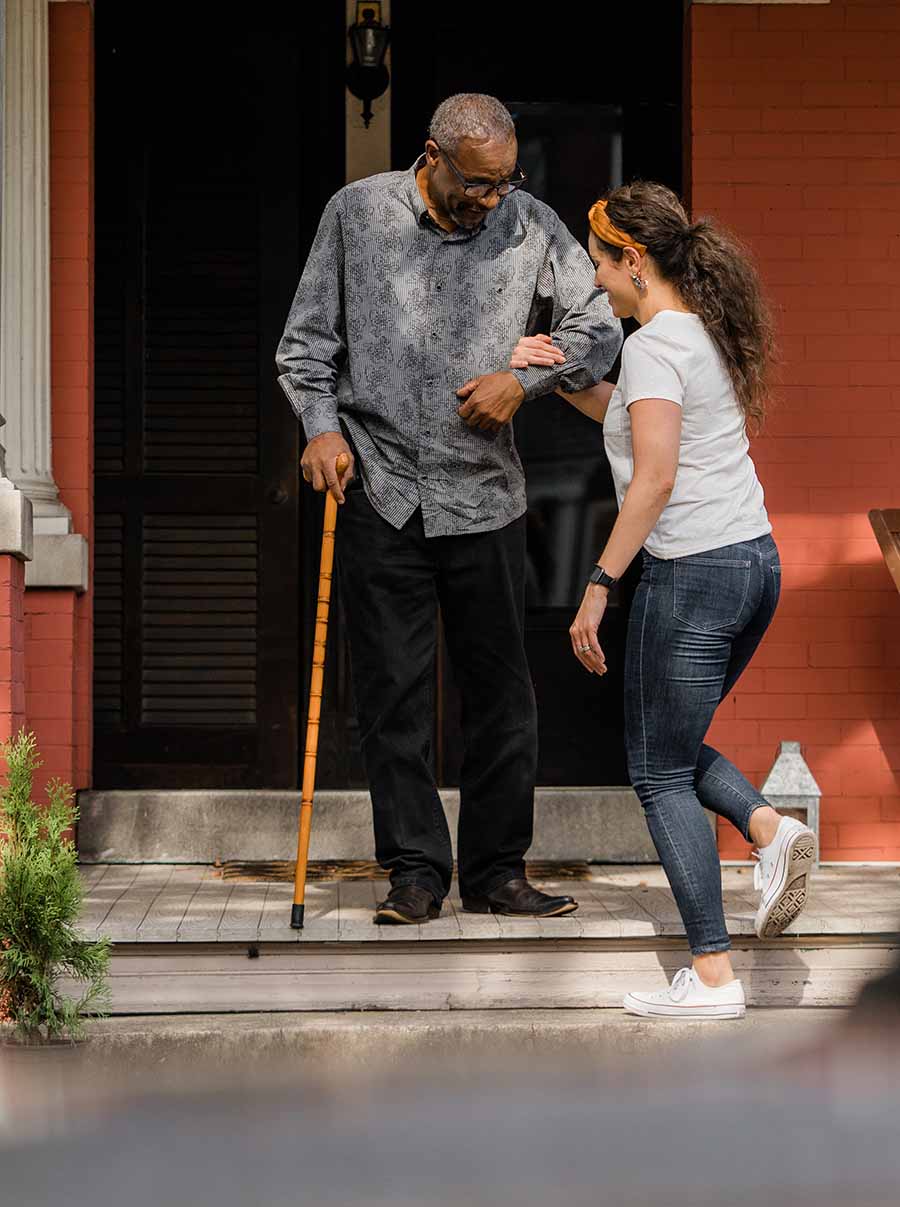
All riders deserve mobility independence and personal dignity when using any form of public transportation, including ADA paratransit.
The presence of a mobility aid should never detract from a rider’s ability to receive a level of service that provides both.
This is why UZURV spends so much time and effort guiding our drivers on the best ways to assist passengers using mobility aids.
According to the 2017 National Household Travel Survey conducted by the Federal Highway Administration, more than 57% of people with disabilities use one or more mobility aids, including:
36.7%
Walking Canes
22.9%
Walkers
11.6%
Manual Wheelchairs
3.9%
Motorized Wheelchairs
2.6%
Crutches
1.3%
White Canes for Visual Impairments
1.1%
Guide Dogs
During onboarding, UZURV drivers receive guidance on best practices when assisting a diverse range of people with disabilities. Including those who use these and other types of mobility aids.
UZURV’s Higher Level of Service

Service begins at the door.
UZURV is built as a door-to-door service.
Our drivers are expected to exit the vehicle, meet the rider at the door, and transport them to the door where their trip ends. Our customers appreciate this, and for many the elevated service is safer and easier to use.
Drivers begin by asking, "How can I assist you to the vehicle today?"
Never assume.
By asking, UZURV drivers quickly learn:
- Does the rider actually need assistance?
- What type of assistance does the rider need?
- Does the rider have any personal boundaries for the type of assistance a UZURV driver may wish to provide?
This “ask first” approach builds trust and affirms UZURV’s belief that in most cases, the riders know their needs better than we do.
Personal Boundaries and Etiquette
Drivers seek permission before ever touching a rider or a rider’s mobility aid.
UZURV understands that many riders view mobility aids as extensions of themselves, touching them is no different than touching the rider. Drivers are told never to take control of a rider’s mobility aid.
Patient communication is effective communication.
When speaking with a person using a mobility device, drivers make sure they are eye-to-eye with their rider.
Drivers are expected to speak directly to the rider—not the rider’s PCA or companion, not the rider’s Sign Language interpreter, not a family member, and certainly not the rider’s service animal.
Finally, we remind drivers that when communicating with a customer with a speech impediment, it’s disrespectful to rush the rider or to try and finish their thoughts to make the conversation go faster.
When a Passenger Needs a Wheelchair-Accessible Vehicle
UZURV partners with qualified Wheelchair-Accessible Vehicle Providers with credentialed drivers to provide the higher level of service that many customers who utilize WAVs need to travel in safety and comfort.
Going Above and Beyond
Providing paratransit is more than ensuring safety or accessibility. Here is the step-by-step guidance we give drivers on how to best assist our paratransit riders:
- Ask riders how they wish to be assisted; confirm the plan and provide service in a safe and deliberate manner.
- Open doors for riders.
- Park in a safe location away from cars or other obstacles that could get in the way of a smooth entry or exit from the vehicle.
- Make boarding and exiting safer and easier by leaving room between the vehicle and the curb.
- When possible, park near an accessible curb ramp or wheelchair loading zone.
- Offer assistance with the seatbelt if it appears that the rider may need help.
- Do not get behind the wheel until the rider has boarded, and do not begin the trip until the rider’s seatbelt is fastened.
What Riders are Saying
“Driver K.B. is so kind and pleasant, very punctual, and also assisted with the walker. He was the best!”
– MTA Maryland Rider Catrice G.
“Me and my wife are visually impaired and have service dogs. We went to vote, and the driver assisted us and made sure that we got properly attended to. We appreciate that the driver took care of us”
– COTA Ride K. S.
